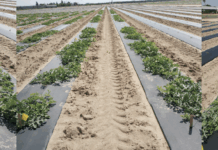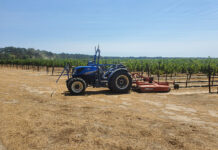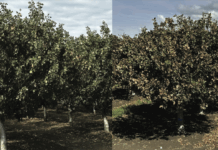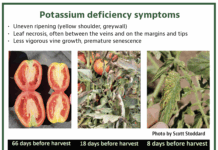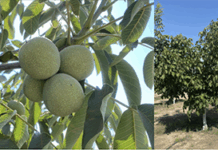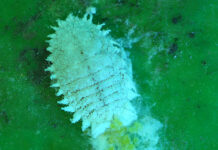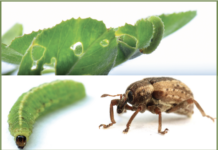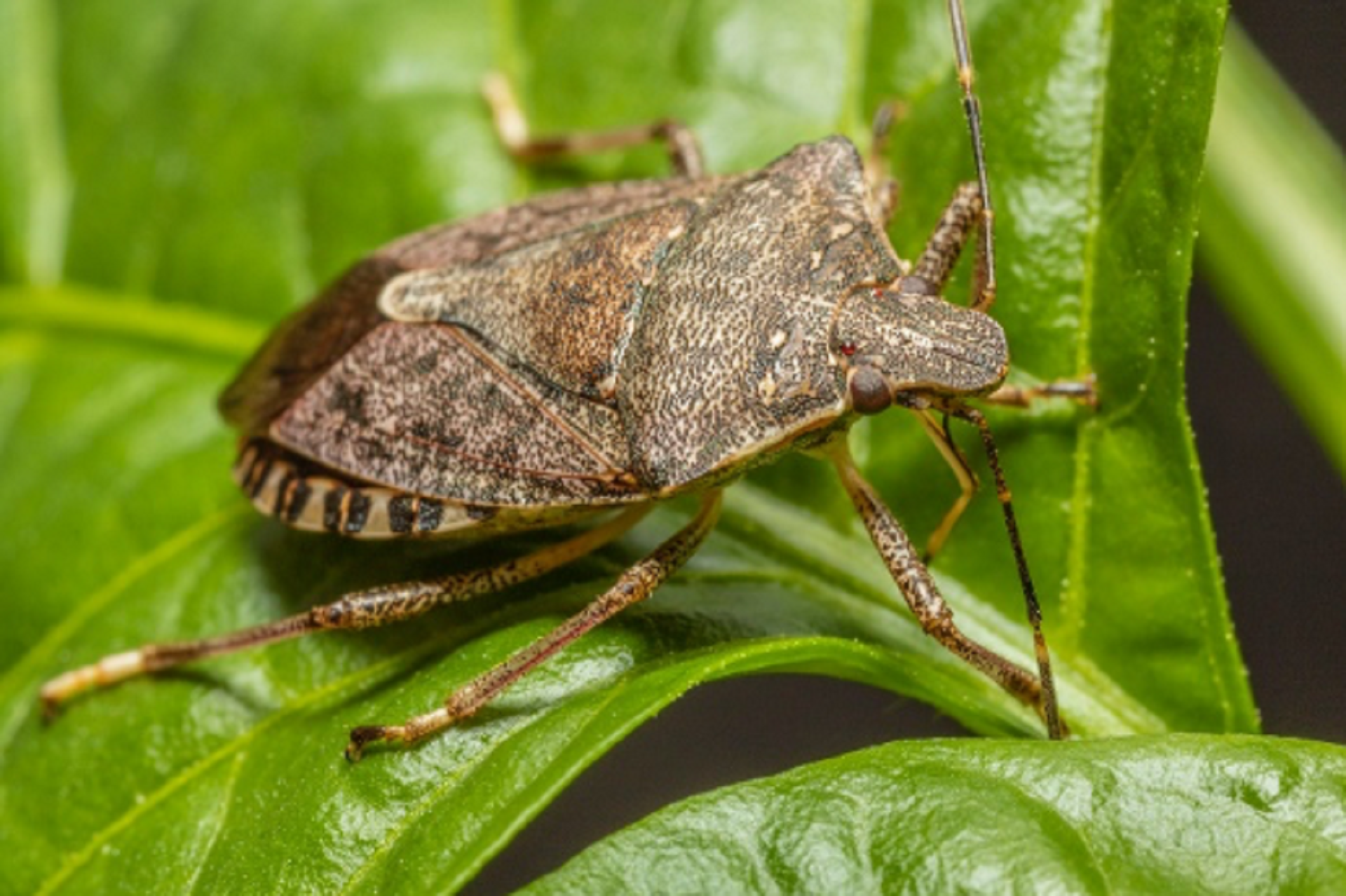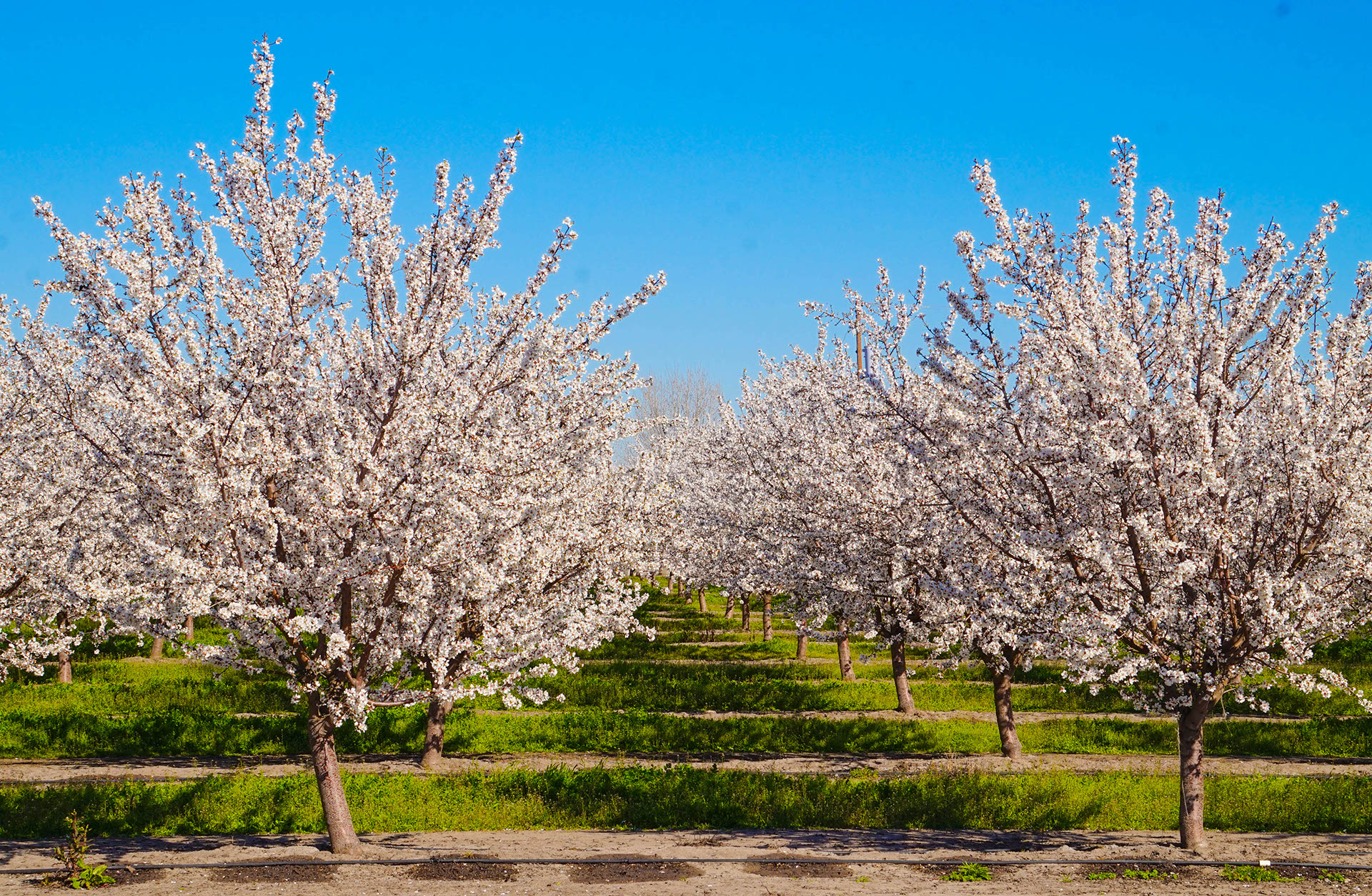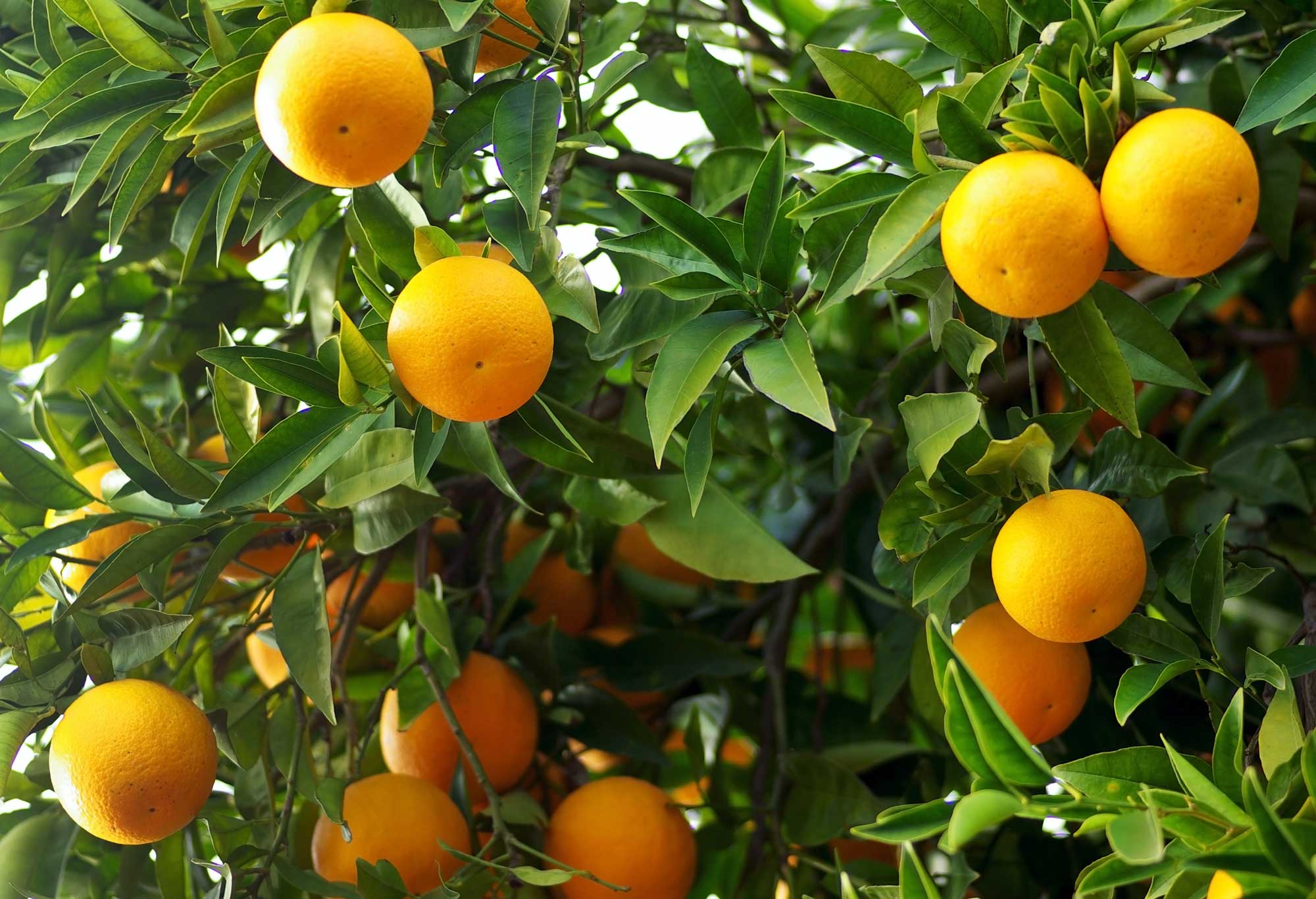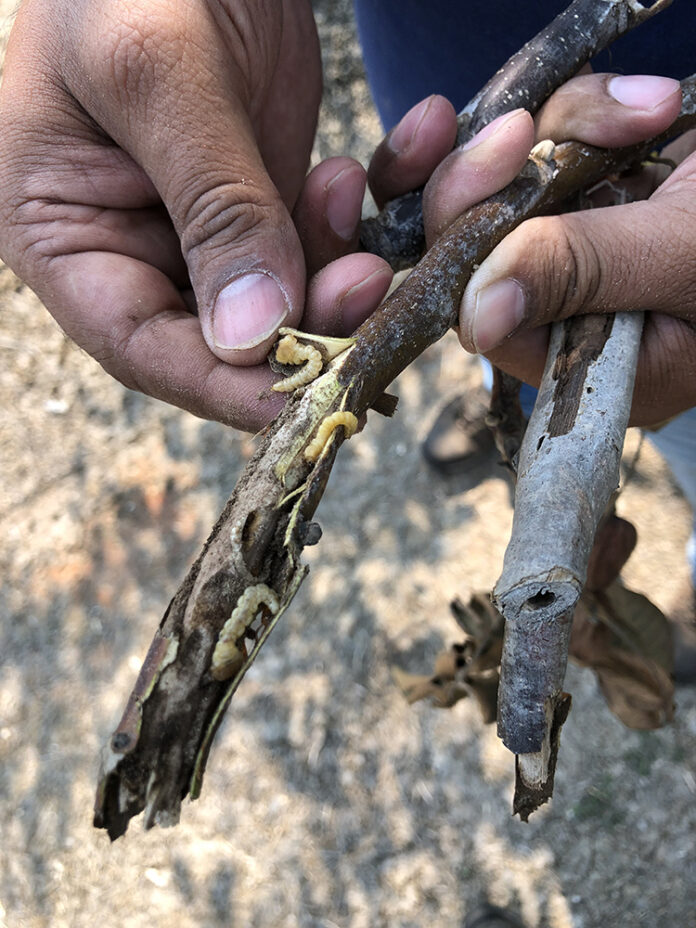
Listen to the audio version of this article (generated by A.I.)
Over the past decade, Pacific flatheaded borer (PFB) has transitioned from a sporadic, stress-associated pest to a resurging threat in California walnut orchards. The adult stage of PFB is a ~0.5-inch beetle of the Buprestidae insect family. They lay eggs on the wood during the summer. After hatching, the larvae, “borers,” feed on the cambium layer first and slowly progress internally toward the pith as they grow. One of a few flatheaded borer species reported in California, PFB (Chrysobothris mali) is the primary species causing damage to walnuts. As the name suggests, this species is native to the Western states and commonly found in Oregon, Washington, Utah, Idaho and California.
PFB has multiple host crops, including major tree crops and other hardwood trees. However, the outbreak we have witnessed in the Central Valley in the last several years has shown that walnut is likely the most susceptible tree crop host. PFB infestations were typically associated with young orchards or trees suffering from stress, sunburn or pruning wounds. However, in recent years, infestations have increasingly been reported in well-maintained and mature trees, on unexposed branches and in orchards with no obvious nutritional or water stress situations. This behavioral shift is potentially due to increased stressors in trees resulting from droughts and other environmental changes, as well as the increased abundance of walnut trees serving as hosts. Since PFB has become a serious concern in recent years, growers and PCAs are still largely unaware of the infestation’s symptoms until it reaches a high level, at which point it is very difficult to manage the pest. PFB damage symptoms are most noticeable in the fall and winter and include oozing brown sap from limbs and trunks, sawdust-like packed frass beneath the bark, cream-colored larvae under bark (summer) or in sapwood (fall/winter), flagged and broken branches and twigs due to larval tunneling, and “D”-shaped adult emergence holes on the bark surface.
Field Observations and Regional Focus
We have observed increased pest pressure and damage to walnuts throughout the Central Valley; however, our research has been more focused in the northern San Joaquin Valley region. The outbreak of PFB was reported in several orchards in the area in 2018. Since then, we have been studying to gain a deeper understanding of this pest’s biology, phenology and control options. Pruning out the infested branches with larvae inside, painting the young plants to reduce sunburn damage, and applying a few selected insecticides during the summer are different ways to manage this pest. Although it is difficult to control in just one to two years if the infestation is heavy in the orchard, combining these methods can be effective in reducing pest pressure and damage over time. In this article, we report the findings of our recent study on the monitoring of PFB in walnut orchards.
Trapping Study
Integrated pest management (IPM) of any insect pest starts with utilizing good detection and monitoring tools. Several studies have investigated the effectiveness of traps with varying colors and shapes in monitoring the PFB insect group (i.e., Buprestid beetles) in forest and nursery systems. A closely related species, the appletree flatheaded borer (Chrysobothris femorata) is the major pest of young nursery trees in the southeastern United States and is attracted to purple-colored triangular traps.
In a 2023 study, we found PFB beetles were also attracted to ground-installed purple triangular traps in California walnut orchards. However, the effectiveness of the trap was not as high as reported for the appletree flatheaded borer in the east.
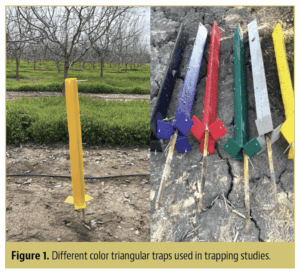
In 2024, trap color studies were conducted in two walnut orchards with a history of damage from PFBs. Six different colors (green, red, yellow, black, gray and purple) of triangular traps were evaluated for their attractiveness to the PFB. The triangular traps were prepared by folding a corrugated plastic panel into a long (4-foot-tall) triangle shape and installed in the ground using a support stake (Fig. 1). Each side of the triangle measures approximately 4 inches in width. The trap is designed to mimic the appearance of a tree trunk. The outer surface of the trap was made sticky by applying TAD Insect Trap glue to retain the captured beetles. The traps were arranged in a completely randomized design with four replications. The same experimental setup was used in both orchard locations. Traps were installed with a spacing of five trees between treatments (colors) in a row, and a gap of three rows was maintained between replications. Traps were installed in April and remained in place through September. Traps were checked, and PFB beetles were collected and recorded weekly.

Results from Orchard 1 showed yellow and red triangular traps captured significantly more adult beetles than any other colors. The purple trap capture was not statistically different from that of green, black or gray traps (Fig. 2, top). Similarly, in Orchard 2, yellow and red traps outperformed the other colors. There was not a significant difference in captures between gray and black traps. No beetles were captured in purple and green traps throughout the season (Fig. 2, bottom).
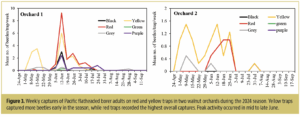
While assessing the seasonal activity of PFB adults, yellow triangular traps captured more beetles in the early part of the season (i.e., the first three weeks of May) in both orchards. Although the red trap captured the highest number of adults in both Orchard 1 and Orchard 2, the yellow trap still appeared to be more consistent in capturing the beetle throughout the season, especially in the early part of the flight (Fig. 3). The peak capture was recorded in the second week of June at Orchard 2 and in the third week of June at Orchard 1.
Since PFB has become a serious pest in many walnut orchards, it is crucial to conduct regular scouting of the orchard and identify damage as early as possible. Our trapping study found yellow and red triangular traps made of corrugated plastics are the most effective in capturing PFB beetles. The design and color found effective in this study can be used by PCAs and growers for monitoring PFB in walnut orchards. Future research should aim to develop commercially available, more user-friendly versions of these traps. Additionally, future research will explore the potential to improve their effectiveness by pairing the traps with new attractants.


